I’ve posted once before about the fighting Male Short-eared Owls I photographed in south-west Montana but I spent several days with these sparring birds and thought they deserved some more attention on my blog.
This was one of the most challenging photography situations I’ve ever faced so the image quality of these shots ranges from acceptable through mediocre to downright poor. But I think they’re good enough for documentation purposes and I wanted to tell the story.
For you bird photographers out there, here’s some of the difficulties I faced while photographing these birds:
- very harsh light much of the time
- trying to get two birds in focus in the same frame while they were fighting in the air (my 500mm lens has extremely limited depth of field)
- much of the action took place far away from me
- this species is normally a relatively slow flyer but when fighting their flight becomes much faster and more erratic which makes them very difficult to track
There were two male owls competing for a lone female. The males would occasionally “sky dance” for the female on the ground. This is a behavior where the male flies over the female and performs exaggerated wingbeats, often clapping the wingtips loudly on the down-beat. I heard that clapping multiple times as the male flew too high overhead for decent shots. Here he’s much lower with the wings in the exaggerated “up” position.
The competing male would usually watch the performance of its competitor from the ground.
Usually one male would attack the other while it was on the ground. Here the bird has seen the attacking male coming in and has assumed a defensive position.
This is the next frame in the burst. Occasionally they strike each other and lock talons.
Other times the attacking male doesn’t come quite so close when the other bird is in an effective defensive position.
More often than not the bird on the ground will jump into the air to present its talons to the attacking owl.
Here the defensive bird is preparing to jump up to meet its attacker.
Sometimes their combat is aerial.
This owl has its eye on the other male coming in for a strafing run.
Here the owl on the upper left has “buzzed” the other bird in the air.
The bird on the right has popped up out of the grasses to meet its attacker.
This is a weird shot but it appeals to me for some reason. The bird on the ground watches as its tormentor passes by after a strafing run.
The bird on the right passes by as the other owl returns to the ground after presenting its talons in an upside down position in the air.
One of the few relatively close shots I got of either combatant during these maneuvers.
This owl has presented its talons to the incoming bird. You can just barely see its wingtip as it passes by in the upper right corner.
In the next frame the defensive owl begins to right itself.
Another strafing run.
I’ve posted this shot before but I wanted to include it here to provide context for the next (and last) image. When the bird on the ground jumps up from the ground and presents its talons in defense, you sometimes get some pretty bizarre body positions.
In the very next frame the defensive and upside down bird watches its attacker pass by.
This was a behavior that I may never see again in my lifetime. It was so very exciting to watch but frustrating at the same time. I missed many interesting shots because of soft focus, blown whites, cut off birds and a variety of other complications but If I ever witness such an event again I hope not to make as many mistakes.
Ron
Note: This is a very long post with many images. Please let me know if that caused anyone loading difficulties.


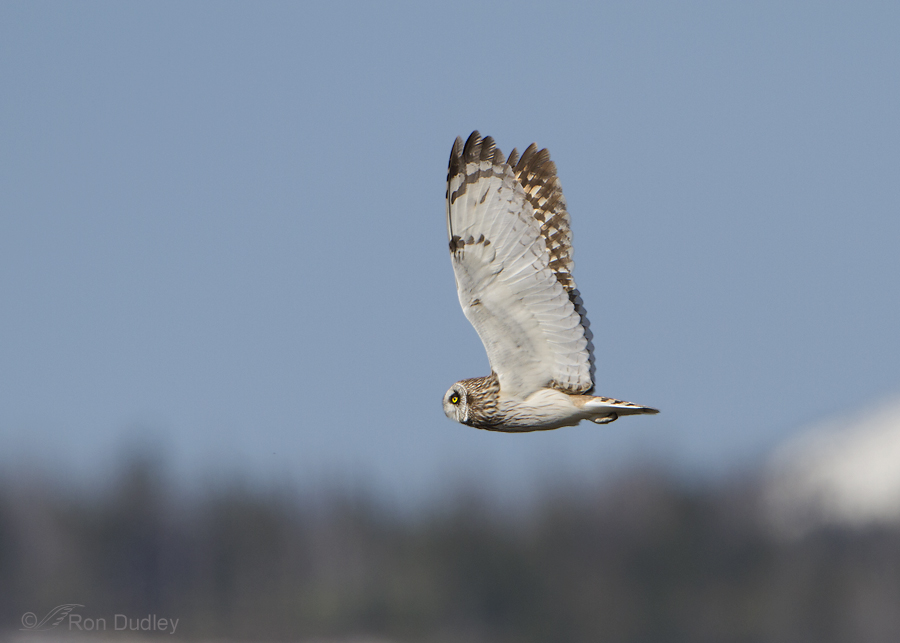

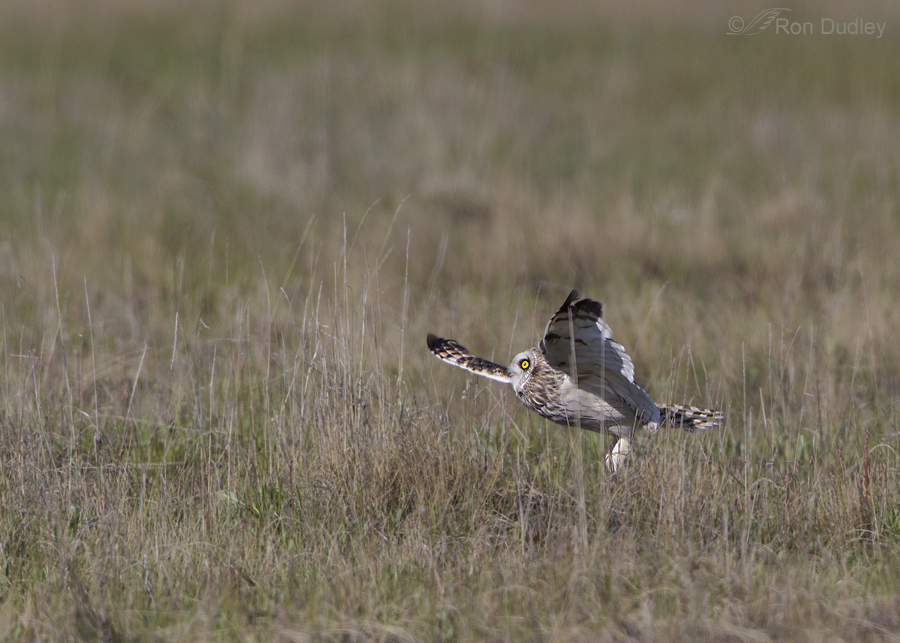
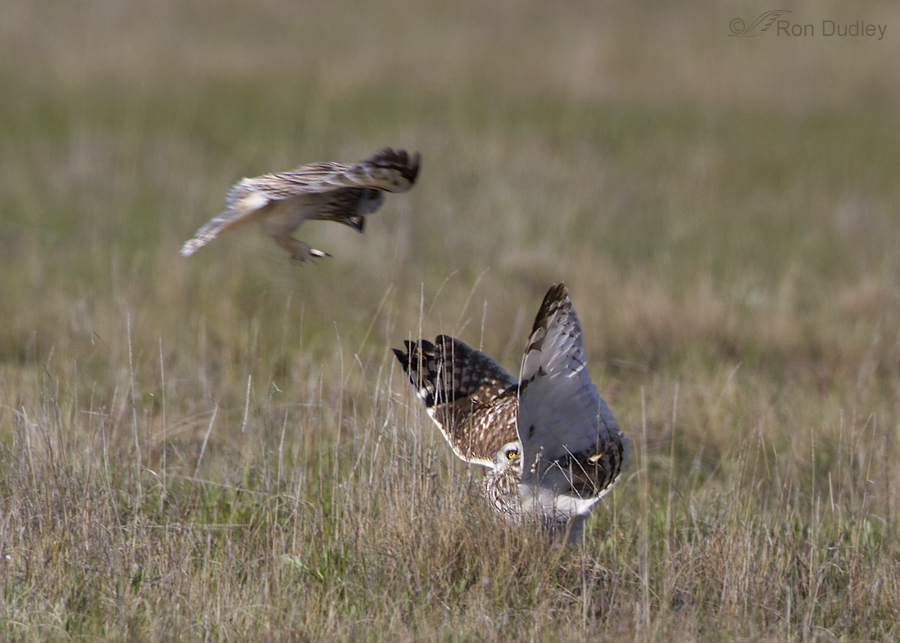

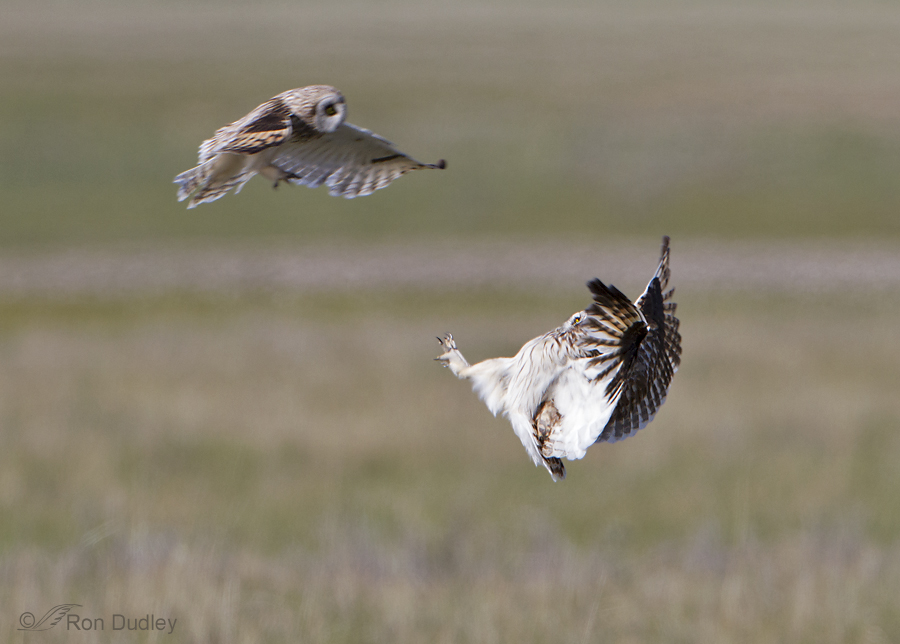
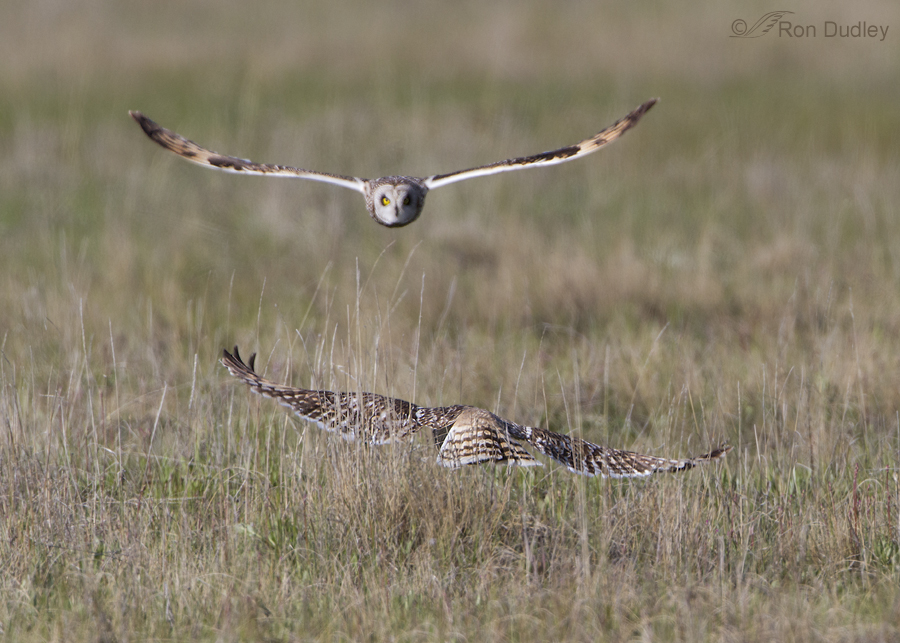
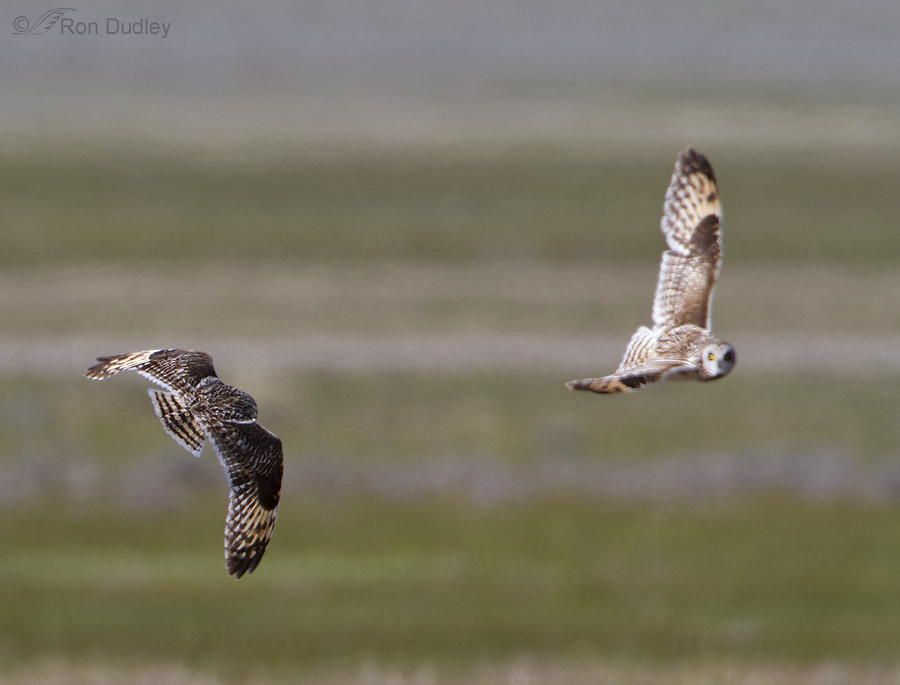
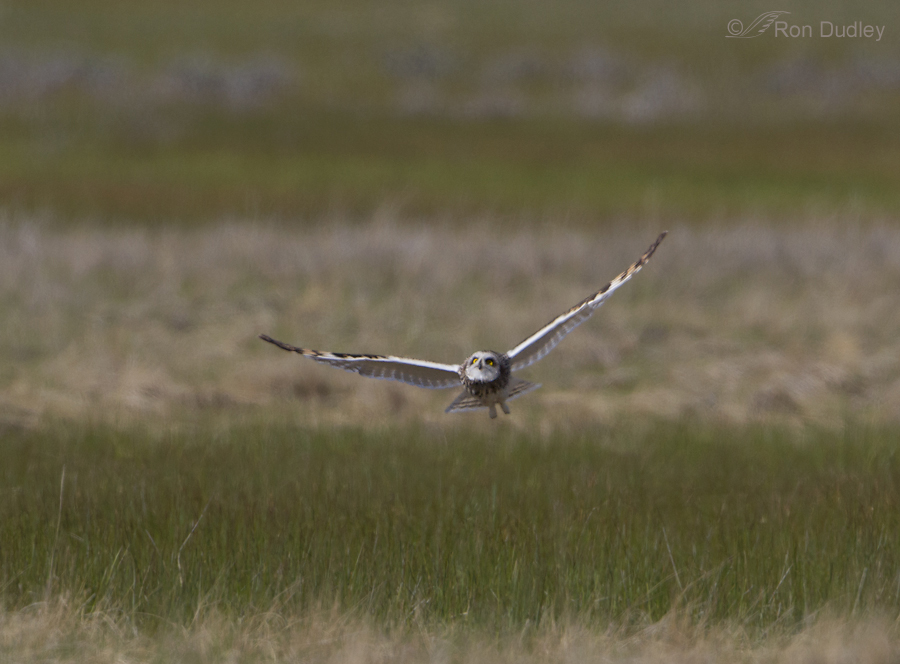
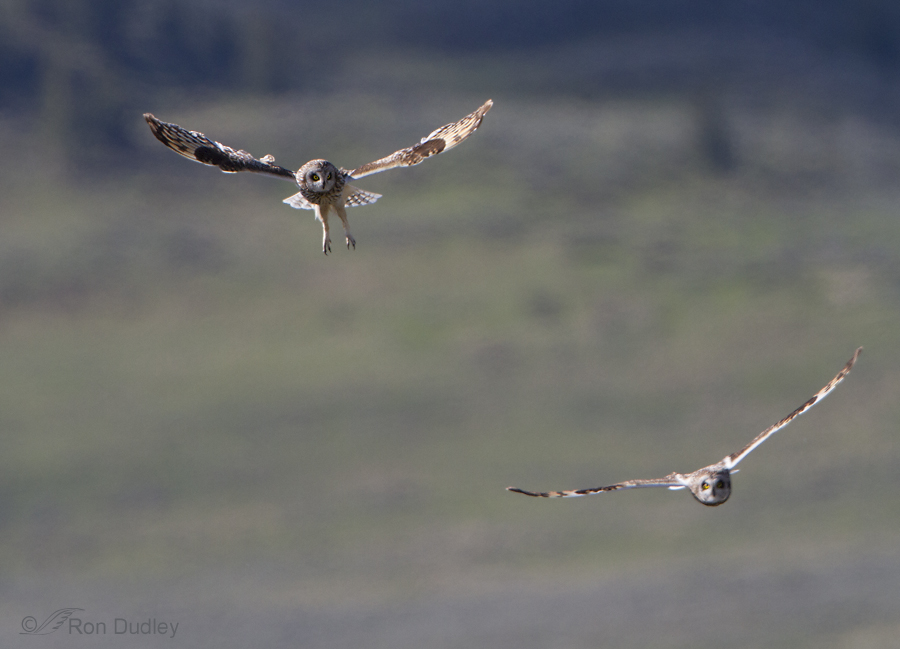
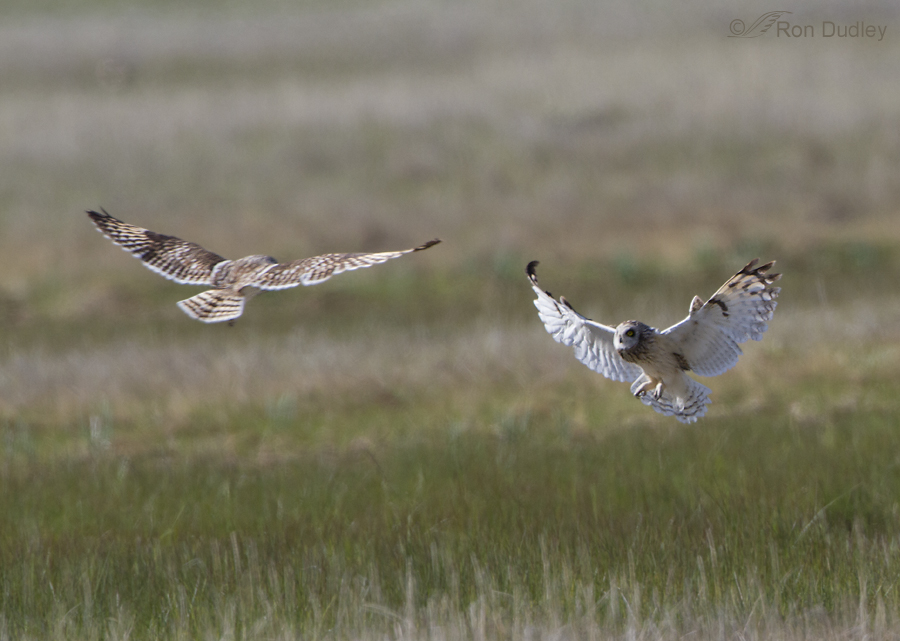
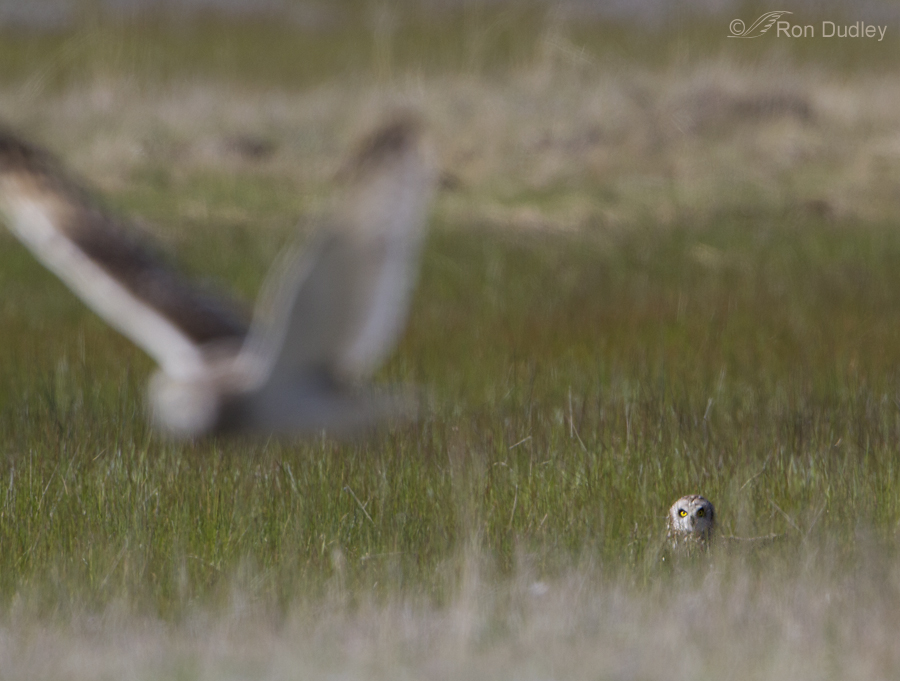
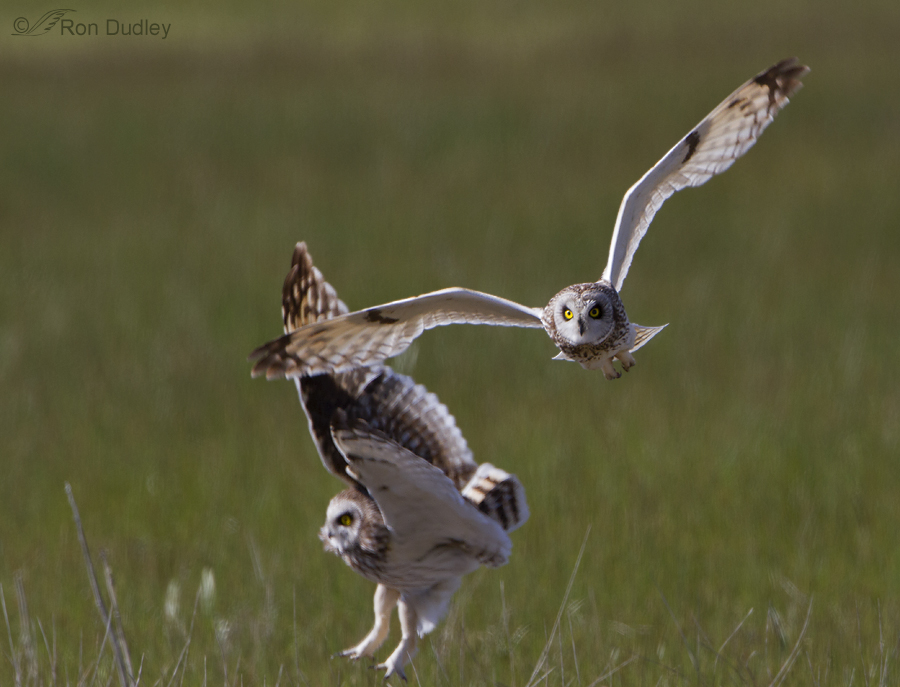
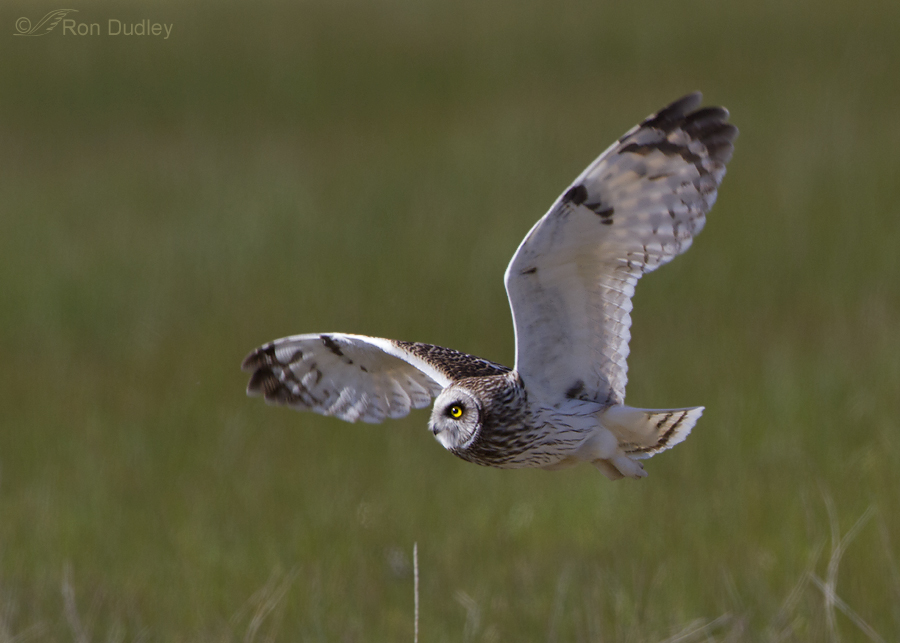
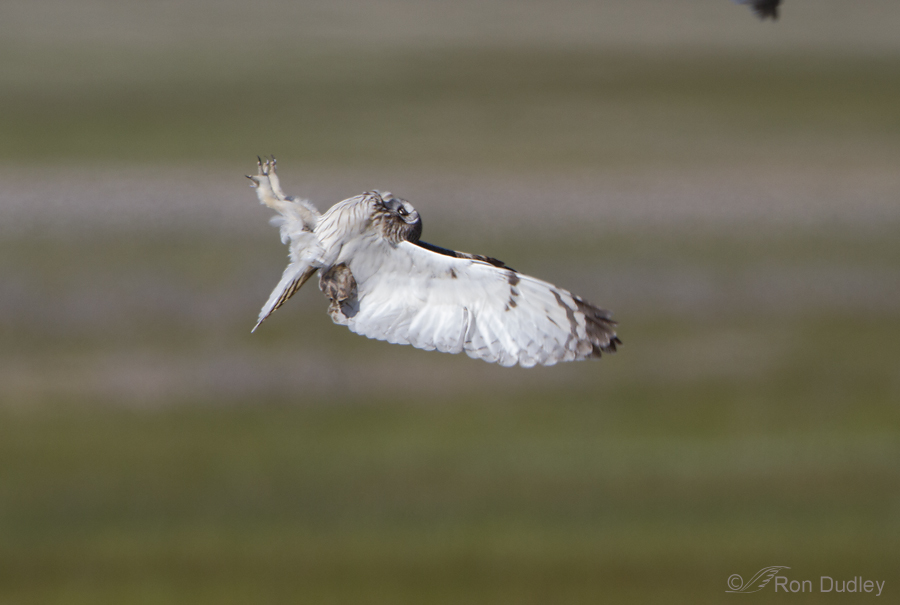
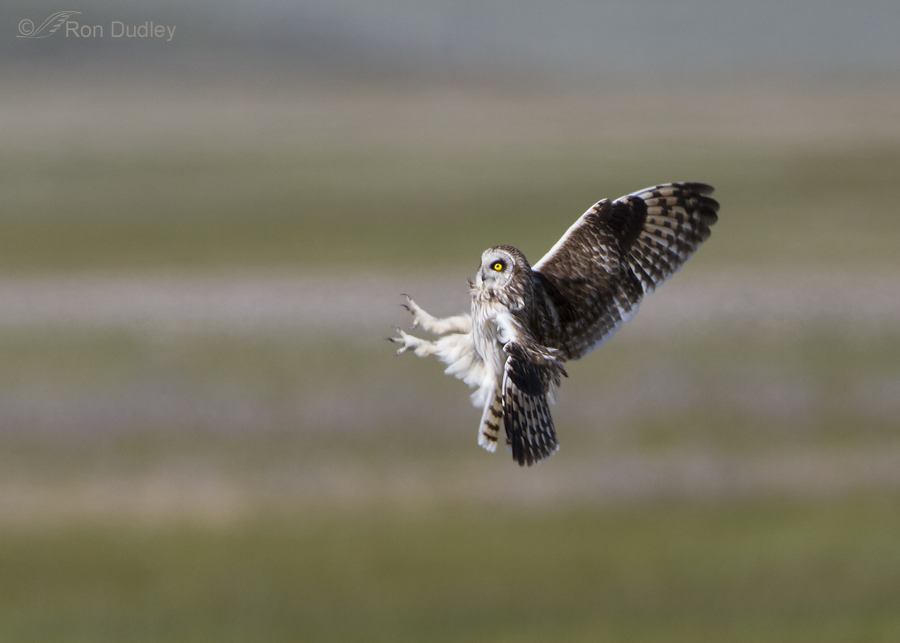
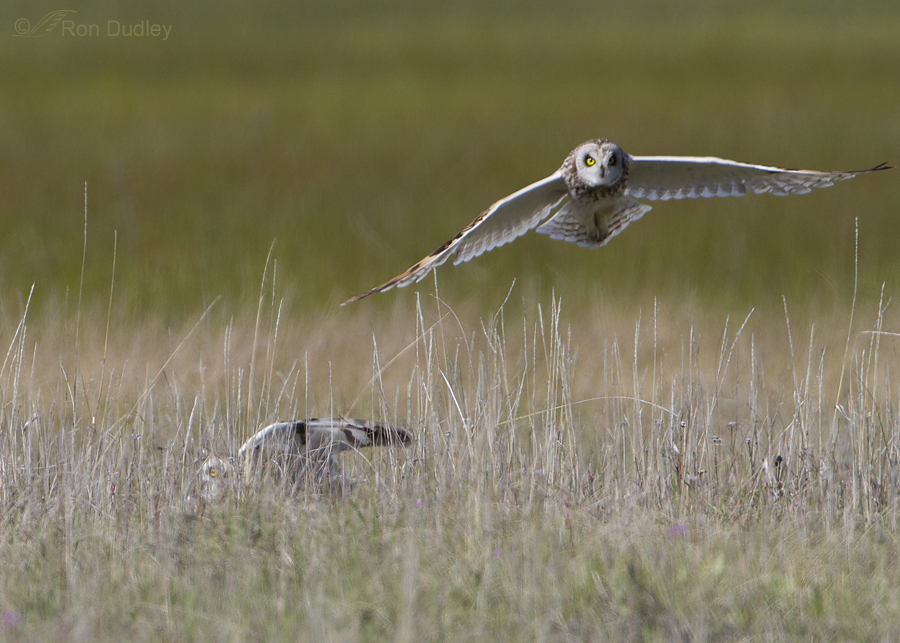
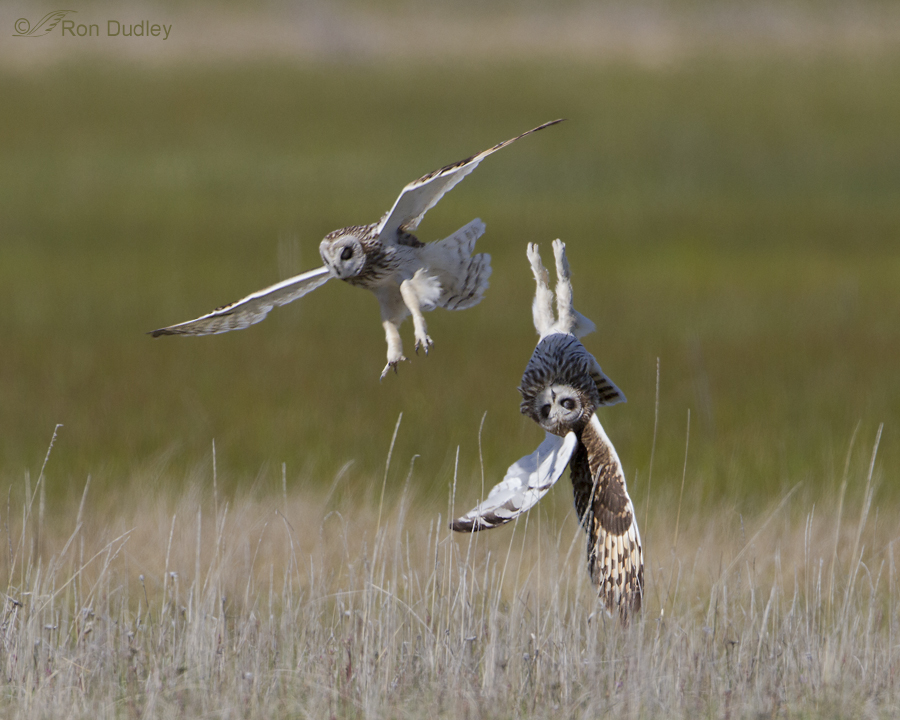
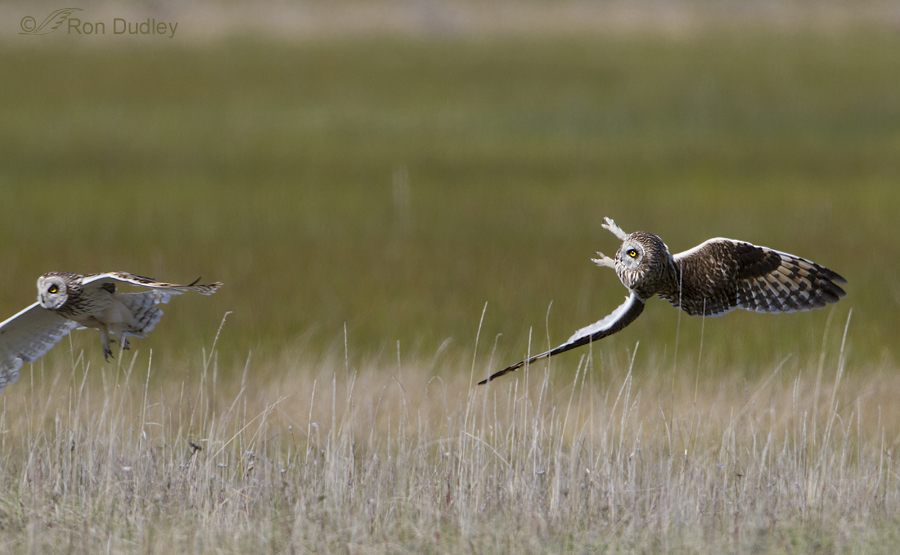
Spectacular sequence Ron! Hmmm…slo mo video?
Short ears are rather intolerant of human intrusion in my experience, making these photos extra special. Any critique of the photos would be hogwash since I know nothing of photography. But as a wildlife educator and someone that gets to work with a couple of owls daily, I can say these photos are excellent tools to teach people about owls and their behavior. One of the wonderfully subtle take-away points from these photos is the idea that owls aren’t just active at night! And they are oddballs in the owl family as they actually build rudimentary nests
Short eared owls, great ambassadors for undisturbed grasslands and marshes!
Thank you so much for sharing these amazing photos.
Thank you, John. Your comment shows me that you’re very knowledgeable about these owls. I’ve seen one of their nests at the base of a sagebrush (I knew where it was but waited until it had been long vacated to visit it). Rudimentary it was but it was still something they built.
And your comment about their need for undisturbed habitats, grasslands in particular, struck me. I’ve been photographing SEO’s in sw Montana for 3 years now. But last year they all but disappeared because yearling cattle had been allowed to graze for a season on the refuge where I had been photographing them. Those “teenage” cows destroyed everything in their path.
I was photographing short ears yesterday in a snowstorm and they were just amazing to watch their aerobatics you photos caught the very essence of the moment. I look forward to going
back to shoot more images. Thanks for putting them up a second time it was well worth it to compare notes.
Craig
It was all so exciting to watch, my heart was racing!
Loaded fine on my new satellite connection, so glad we got it. Would not be able to enjoy your blog on dial-up.
Jo
Very, very interesting!
Charlotte
Thanks,Teri, Lois, Nicole, Christina and Gale. I appreciate your comments very much.
Brilliant, brilliant, brilliant. I love the upside down bird with its britches and talons on full display. Is it mostly sound and fury or do they ever cause each other real damage?
It is obviously my day for owls (which I have said in response to earlier owl posts are one of my most favourite birds). I was sent this link to a video earlier today. Some (I would think) atypical behaviour by owl and cat…http://www.boreme.com/posting.php?id=35264
Thank you, Elephant’s Child. Fascinating video clip. I’ve seen another, probably older, version of these two disparate friends romping together. Intriguing!
Great shots Ron. Your photos and stories are great
Ron,
I read religiously all your posts and I just lack time to comment every one of them. But I can’t resist on this one. Your photos are amazing and I can imagine all the pleasure you must have in writing your posts. When you bird, when you travel or when you take photos the pleasure is always multiplied by 3. When you prepare the outings, when you are active in the field and, finally, when, later on, you take a look on your bird list, the field notes or the photos taken. You are a lucky man Ron for having this passion in you, for having health and time to leave free course at your passion. I know personally several people that are able to do as much in my region, but nobody has your generosity. Your not only a lucky man, Ron, you are a great human being. Thank you to make my day so often !
What a very nice comment, Laval. You’ve got me pegged on multiple levels – you’re right, I get exactly the triple rewards from my photography that you describe. And yes, I’m very lucky to have the opportunity and the time for my photography.
Ron,
I have been enjoying your photos and stories for a while now and love them all. But, I have to admit these Short-eareds are my favorites. I l live in Western NY and have been seeing them alot lately. I LOVE these birds! I am still trying to get some decent photos of them in flight. I am in awe of your pictures! Thank you so much for sharing!
WOW… Just fascinating studies and brilliant captures! Adore owls, just adore them.
Yowzers!!! What an incredible series of shots!!! WOW!!! I am amazing that you captured them upside down. Mind boggling!!
WOW!!!!!!!!!!!!!!!!
Amazing Shots! These are wild pictures full of surprise. Thank you for sharing this once in a lifetime experience.
Ron, GREAT SHOTS!!
You do a wonderful job with your images and comments, providing the viewer to be vicariously there with you!!
Super job – and I know how hard it is to track birds with a big lens.
Thanks for saying that, Dick. I don’t think many folks are aware of the challenges of tracking birds in flight through a long lens.
Amazing set of shots! I can imagine your excitement in capturing this. I had no problems in viewing this. My favorite pic is the upside down owl, so interesting. One question, how did this fight end?
Debbie, I don’t know the ultimate outcome. The skirmishes between the two birds lasted for at least two days that I know of and they weren’t over when I left for home.
This set of images has stuff for my Left Brain and my Right Brain!
~Tim
Glad to help you keep both hemispheres exercised, Tim!
Amazing!!! Especially the next to last one where the owl seems to be hanging in midair. It’s difficult for me to imagine how they stay in control of their body when they jump up into the air showing their talons. Was the lady they were fighting over watching? (Oh, and no problem loading.) Thanks as always for a fascinating glimpse into another world.
Leisa, Yes, the female was on the ground watching all of this unfold most of the time.
Simply wonderful set of photos. I seriously doubt that anyone expects both birds to be always in focus during this kind of activity. It’s remarkable that you were able to document this activity so well. I’m amazed by the owls’ ability to be upside down and stay in the air. No problem loading this post.
Thanks, Susan. Yes, these birds are very acrobatic when they need to be.
I love the upside down shots, the owls look so ungainly, which of course they are anything but. I have heard that clapping sound when their wings beat, and it is very odd. Thanks for the wonderful pics and story line!
You’re among the special few, Tana. I suspect that not many have heard the clapping sounds of sky dancing owls. Pretty neat, huh?
Fantastic series. Really nicely documented. And we always try to take lots of shots, knowing that many of them will be unusable. What you showed here is wonderful.
Page loaded routinely on a ‘normal’ internet connection.
Interestingly the tenth photo (I think) down clearly shows those ‘leading edge slats’ we so seldom get to observe.
Nice work.
Terry, I count it as the 11th photo down. Yes, that’s the alulae.
Loading this post on my 6-year-old desktop PC running Windows 7 was no problem. Thanks for sharing this great series of shots. I think I’ve commented before that you must sometimes feel like an avian war-zone photojournalist.
BTW, have you just started embedding EXIF data in your posted photos, or have you always done so and my old brain cells are misremembering? If so, thanks. Being able to right-click on a photo and read the EXIF data via a browser add-on is a real treat.
Dwynn, I started including my exif data a couple of months ago when I decided I wanted to have my name embedded in the file name with the image.
More amazing behavior studies. No problems with mycomputer but problems keeping this amazing bird behavior straight in my mind.
Will remember this when I feed the educational male human implant barn owl at our local science center.
I envy you your time with the Barn Owl, Diana.
Thank you, Paul. And I appreciate the feedback on the loading time.
Hi Ron
What an amazing set of shots! No problem with their loading at all here. I don’t have a very fast connection either. I wish I had seen photos of this type when I was at school as it would / could have changed my career interest I reckon.
We only really get owls here at dusk or later and it’s a rare sight too.
Keep up the good work! Your photos are wonderful and also very educational. The narratives are great too.
Cheer,
Paul